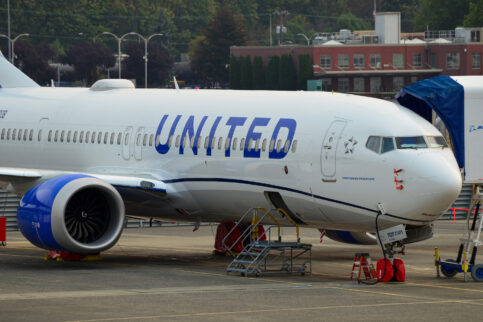With a method called program accounting, long blessed by both the U.S. Securities and Exchange Commission and its auditor, Deloitte, Boeing spreads its high early costs of jetliner production over a roughly 10-year block of deliveries, enabling it to book future earnings in times of steep cash usage. Ultimately the intent is to balance out the enormous costs of producing a jetliner and recognize the long-term rewards of a successful program.
JoinedMay 31, 2018
Articles588
Comments1
Jon Ostrower is Editor-in-chief of The Air Current, where he leads coverage of the global aerospace and aviation industries. Prior to launching TAC in June 2018, Mr. Ostrower served as Aviation Editor for CNN Worldwide, guiding the network’s global coverage of the business and operations of aviation. Mr. Ostrower joined CNN in 2016 following four and a half years at the Wall Street Journal. Based first in Chicago and then in Washington, D.C., he covered Boeing, aviation safety, and the business of global aerospace.
Before that, Mr. Ostrower was editor of FlightBlogger for Flightglobal and Flight International Magazine covering the development of the Boeing 787 Dreamliner and other new aircraft programs from 2007 to 2012.
He is also an instructor at the University of Southern California in the Viterbi School of Engineering's Aviation Safety and Security program. Mr. Ostrower, a Boston native, graduated from The George Washington University’s School of Media and Public Affairs with a bachelor’s degree in Political Communication. He is based in Seattle.
Even as Boeing works to explain its detailed statistical analysis to the Federal Aviation Administration of its inspection findings on its fleet of undelivered 787 Dreamliners, the company continues to disclose new issues with its aircraft that further disrupt its path toward resetting its production system and restarting deliveries.
Delta's A350 & 737 deals are done, clear signs of business travel's green shoots, Eviation's new look for its all-electric Alice.
United unveiled a record deal on Tuesday with Boeing and Airbus for 270 new aircraft, but don’t take your eye off Delta.
A large turboprop freighter opens a new front in its strategy as Amazon expands its reach to smaller communities.
Seeing an opening with uncertain Boeing product strategy, Airbus advances toward an A350 freighter. Possible buyers urge consideration of an engine from GE.
“Boeing is very much relying upon that commercial pressure from the airlines in China, putting political pressure on Beijing...And so far it hasn’t happened yet,” said Air Lease CEO John Plueger.
GE Aviation and Safran laid out their post-pandemic strategy, a broad technology development plan called RISE aimed at low-emission propulsion for commercial aviation in the 2030s. In a ceremony befitting the cinematic legacy of Southern California, eVTOL entrant Archer unveiled its Maker technology demonstrator. The well-funded start up is part of an industry gold rush that looks a lot like aerial entrepreneurs of the 1920s. Your humble correspondent returned to flying again after 470 days on the ground. But who's counting?
United Airlines wants to fly supersonic with Boom's Overture. "We are pushing the boundaries of what we can do here in commercial aviation.”
There are a growing number of recent comments from NASA officials and government notices that point to NASA plans for a piloted experimental X-plane to validate Boeing’s transonic truss-braced wing (TTBW) design as the possible template for a future smaller single-aisle. Boeing hasn’t decided on a path for its own development future, but the Biden budget priorities begin to put the U.S. government’s finger on the scale as a national stakeholder in the plane maker’s success or failure.
Log-in here if you’re already a subscriber Release DateMay 21, 2021Out of money, Aerion’s supersonic pursuit is at its endPurchase...
Breeze Airways is on the verge of reality. The nascent airline is readying its route structure and going through its proving runs with the Federal Aviation Administration. The plan to find a new U.S. home for Azul’s sunsetting E190s predates COVID-19, but David Neeleman finds himself with inexpensive aircraft and a shifting lessor business model made for crisis.












